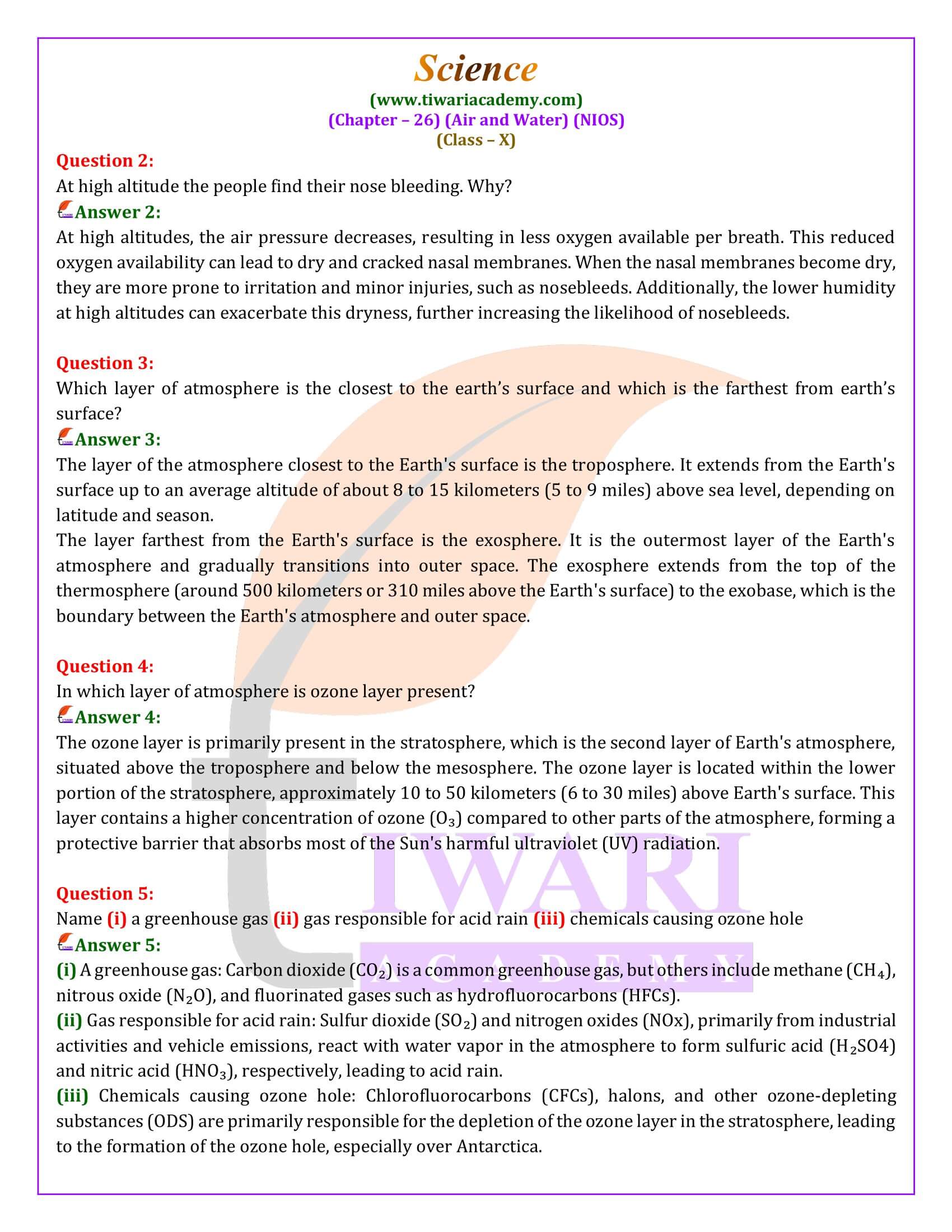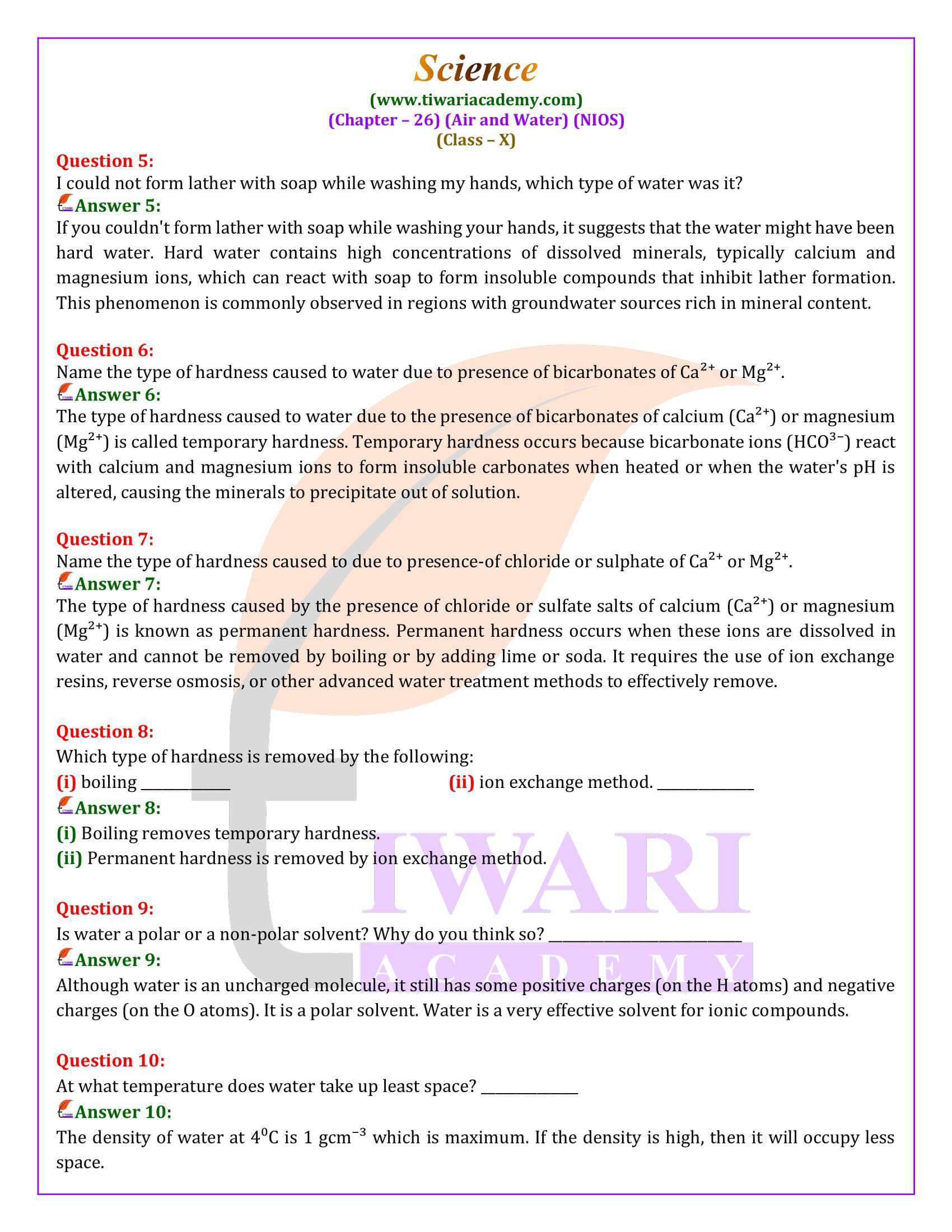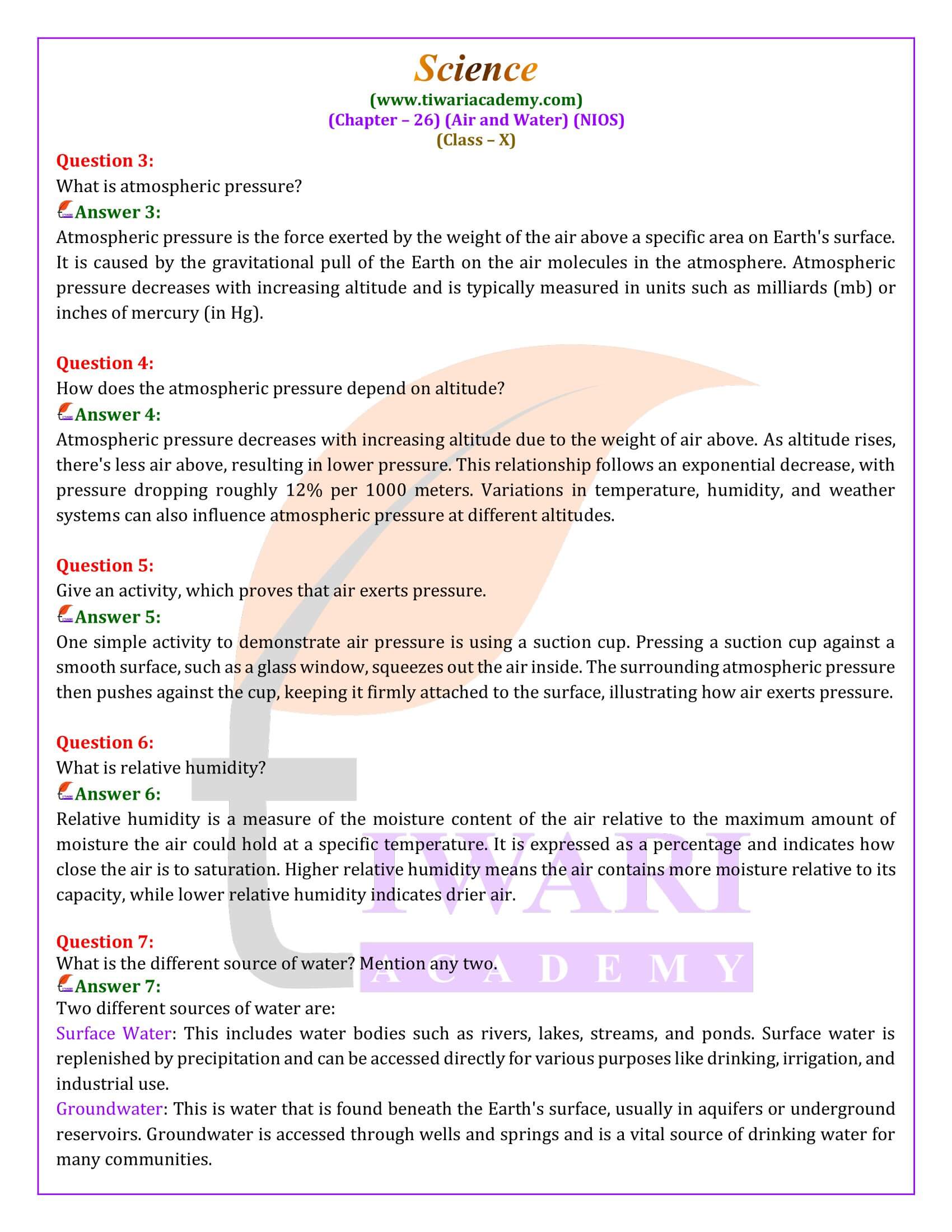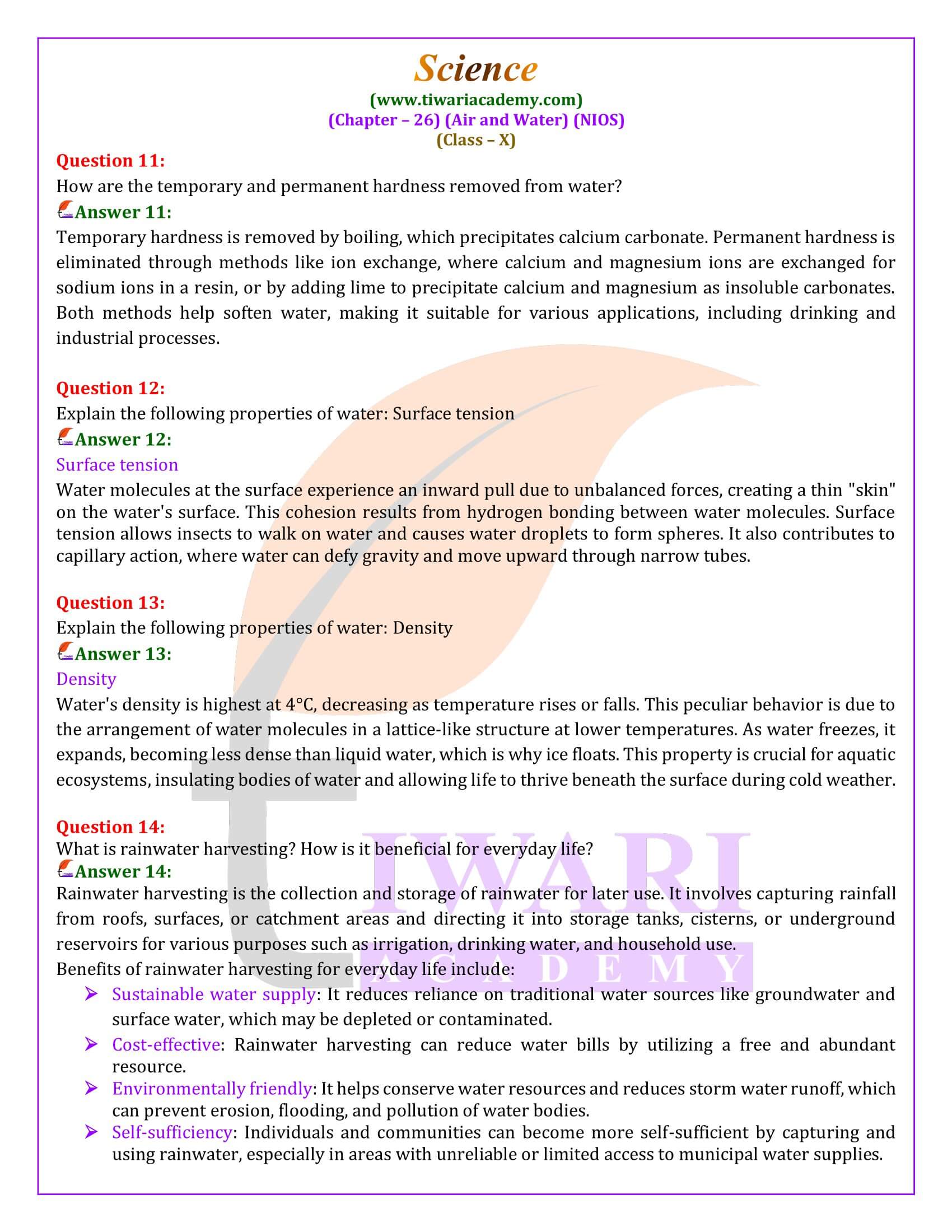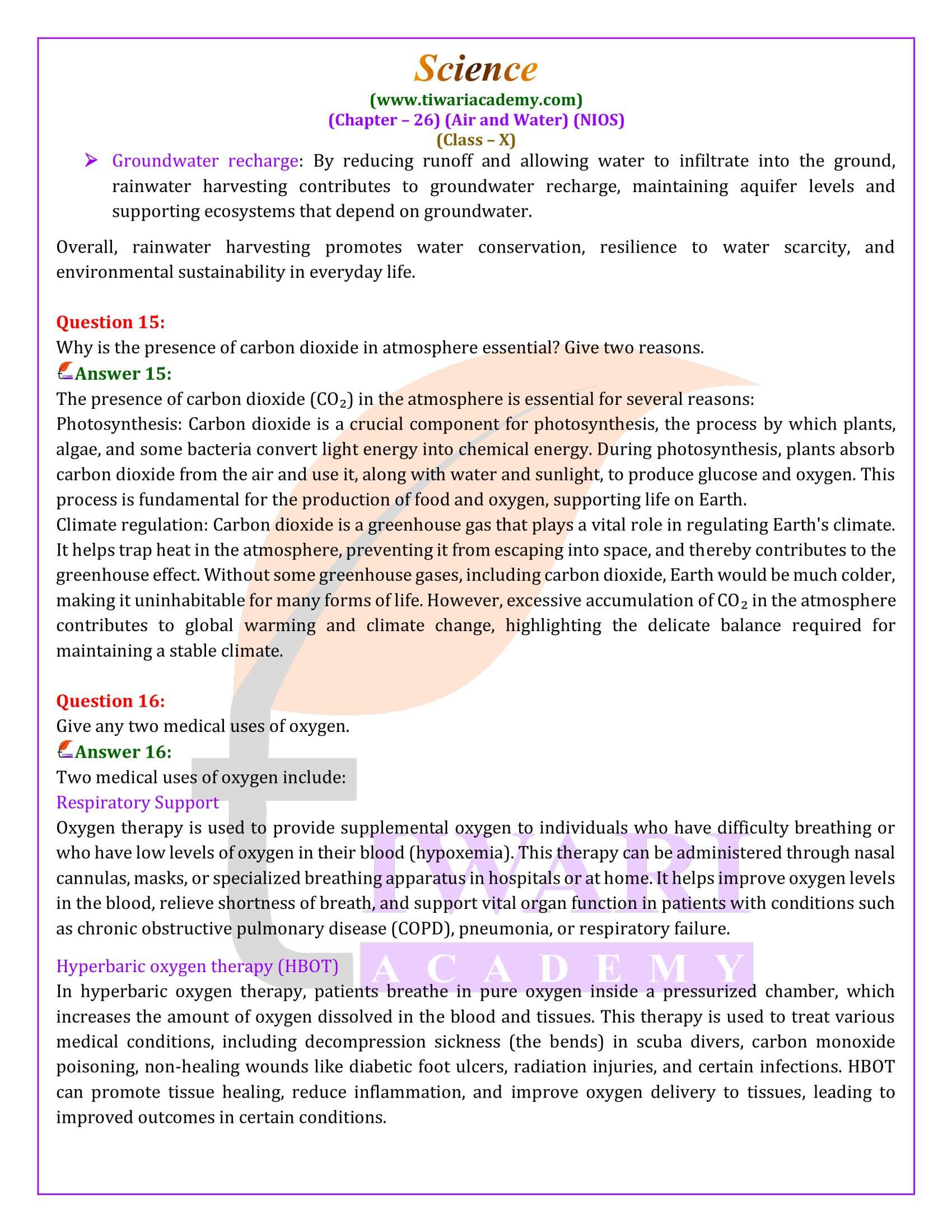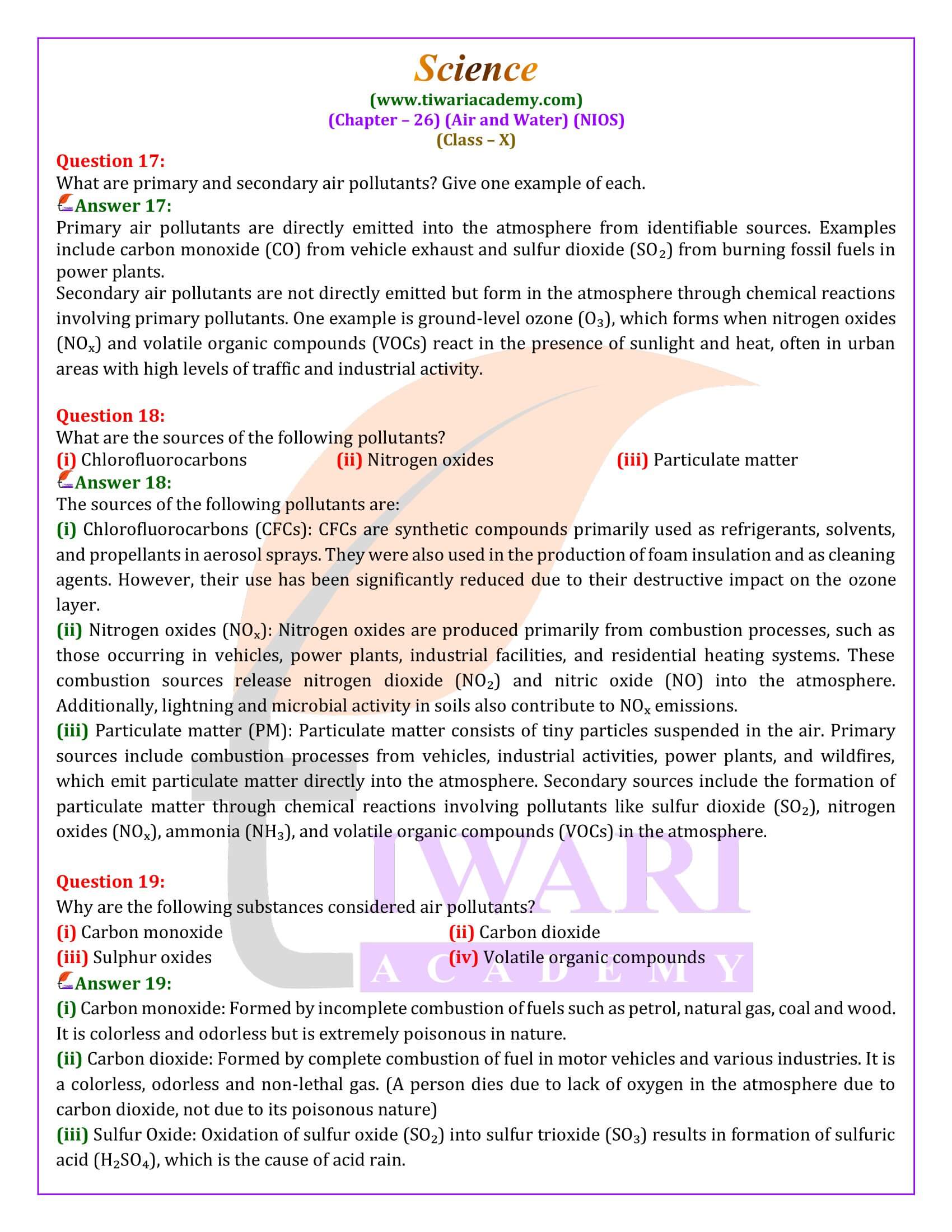NIOS Class 10 Science Chapter 26 Air and Water in Hindi and English Medium modified and updated for new session 2025-26. All the question answers of NIOS Class 10 Science chapter 26 are simplified to make the learning easy.
The Composition and Importance of Air
NIOS Class 10 Science Chapter 26 begins by elucidating the composition of air, which is predominantly nitrogen (78.03%) and oxygen (20.09%), along with traces of argon, carbon dioxide, and other inert gases. Historically, the understanding of air shifted significantly when scientists like Mayow and Lavoisier discovered that air is a mixture and identified oxygen’s role in combustion and respiration. Oxygen’s utility spans across various domains: from medical uses like oxygen therapy and surgical anesthesia to industrial applications in steel manufacturing and welding. NIOS Class 10 Science Chapter 26 also touches on the adverse effects of oxygen, such as its role in corrosion and combustion.
Nitrogen’s Role in Life
Nitrogen, another major component of air, is crucial for life as it forms the backbone of proteins and enzymes. The presence of nitrogen in the air helps moderate processes like metabolism and combustion due to its inert nature. The importance of nitrogen compounds for plant nutrition highlights the interdependence of atmospheric components in ecological and biological cycles.
Carbon Dioxide’s Dual Effects
Carbon dioxide, though a minor component of air, plays a critical role in photosynthesis, helping convert solar energy into chemical energy. However, its increasing concentration due to human activities has contributed to global warming, making it a dual-edged sword in environmental dynamics.
Water Vapour and Atmospheric Dynamics
NIOS Class 10 Science Chapter 26 covers water vapor’s crucial role in weather and climate systems, including its part in cloud formation and precipitation processes. Water vapor’s variability leads to significant differences in weather patterns across different regions.
Water: A Vital Resource
Transitioning from air to water, NIOS Class 10 Science Chapter 26 describes water as an essential, abundant resource, covering over three-quarters of the Earth’s surface. It details various water sources such as rain, rivers, and seas, and distinguishes between potable and non-potable water. Methods to purify water, such as filtration, boiling, and chemical treatment, are explained to emphasize water’s critical role in maintaining health and hygiene.
Unique Properties of Water
Water’s unique properties, like being a universal solvent and exhibiting behaviors such as surface tension and capillarity, underline its indispensable nature in daily life and ecological balance. NIOS 10th Science Chapter 26 also discusses the conversion of hard water to soft water to prevent scale formation, which impacts industrial and domestic water usage.
Water Pollution: Sources and Impact
The narrative on water extends into pollution issues, identifying sources of pollution like industrial discharge and agricultural runoff. The distinction between point and non-point source pollution introduces the complexity of managing water quality in diverse environmental contexts.
Water Conservation and Management
NIOS Class 10 Science Chapter 26 stresses the importance of water conservation and rainwater harvesting as crucial strategies to manage water sustainably. By outlining methods and benefits of rainwater harvesting, the text aligns with global efforts to enhance water security and ecological sustainability.
NIOS 10th Science Chapter 26 serves as an informative piece on the fundamental aspects of air and water in our environment, highlighting their critical roles, utility, and the need for prudent management amidst growing environmental challenges. It encourages a holistic view of these natural resources, stressing the interlinked nature of ecological and human systems.


